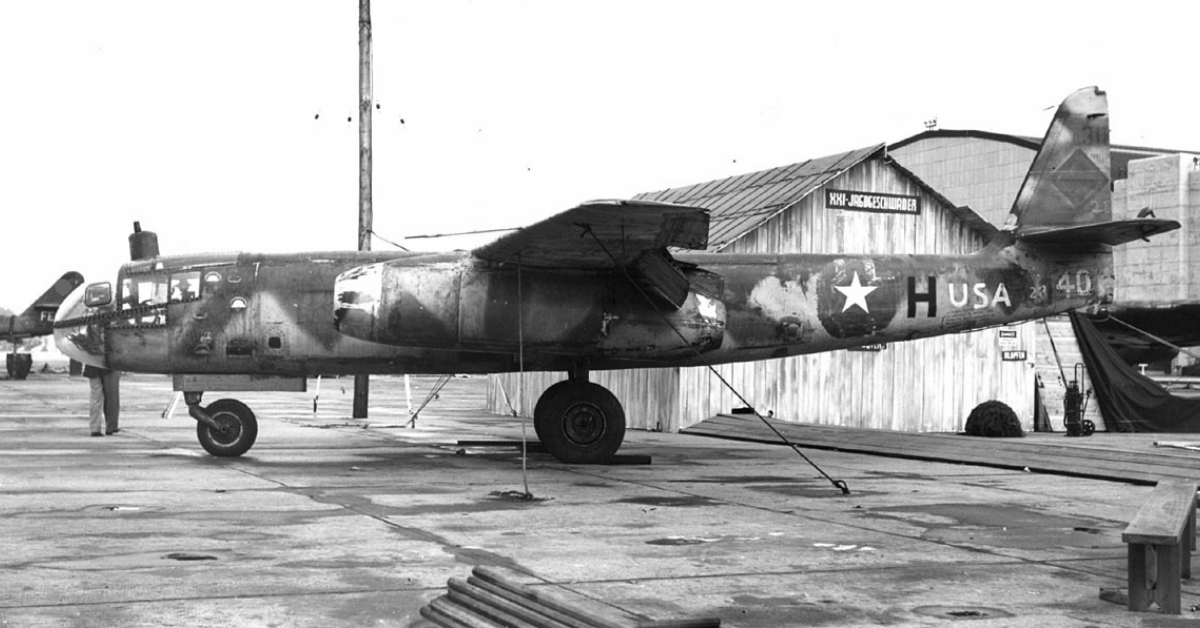The German word Blitz means “lightning,” and it is a name well-deserved by the Ar 234 which continually swept through the Allied airspace with virtual impunity.
The Ar 234 was one among several wartime innovations that stood as testaments to Germany’s brilliance with science and technology.
While the Messerschmitt Me 262 was the world’s first operational jet-powered fighter, the Ar 234 was the world’s first jet-powered bomber.
However, it spent limited time in action as a bomber aircraft, instead spending most of its service time as a reconnaissance aircraft. But when it was employed as a bomber, the Ar 234 was almost impossible to intercept.
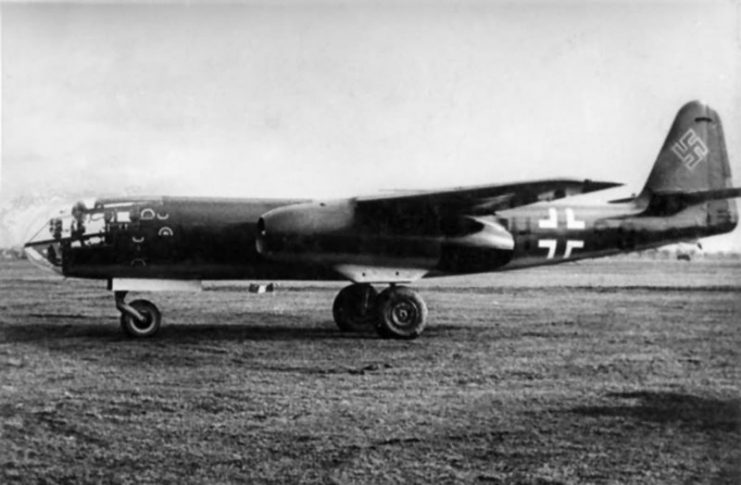
A golden bird in the hands of the Luftwaffe, it was the very last German aircraft to fly through Britain’s airspace at the end of the war.
With the development of the Heinkel He 178 in the 1930s, Nazi Germany had shown keen mastery of the nuts and bolts of jet engine technology. The country was poised to develop much larger, even faster jet-powered aircraft that would be instrumental in Hitler’s dreams of conquest.
As a result, the following years would see the arrival of the Messerschmitt Me 262 and the Arado Ar 234.
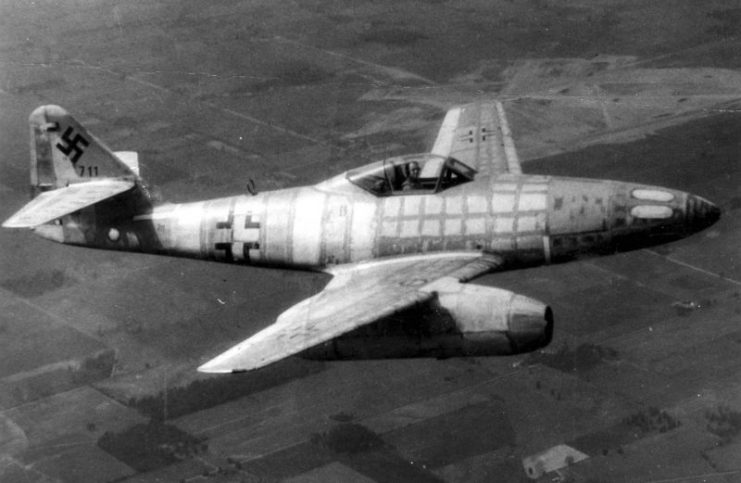
In the autumn of 1940, the Reich Air Ministry offered a tender for a jet-powered, superfast reconnaissance aircraft. The aircraft was also supposed to have a range of 2,156 km (1,340 mi). However, only the Warnemünde-based Arado Flugzeugwerke Company responded.
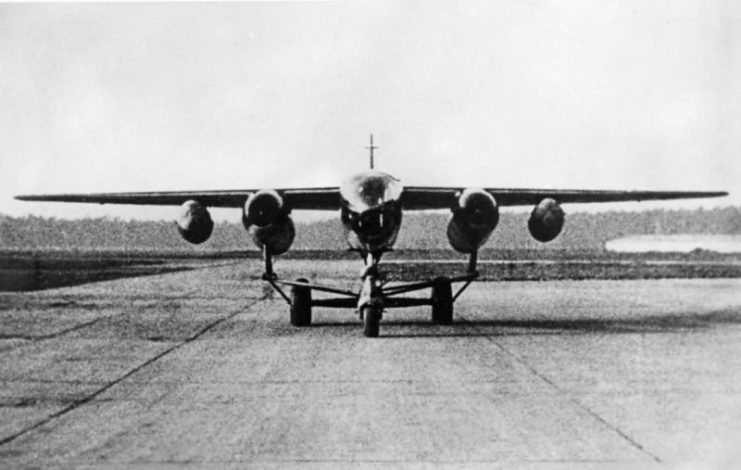
Arado offered up their E.370 project, an aircraft design which had one Junkers Jumo 004 turbojet engine under each wing. This design was estimated to have a range of 1,995 km (1,240 mi) which did not make the Reich Air Ministry’s cut.
However, the Air Ministry liked the design and issued an order for two prototypes which were designated the Ar 234.
The aircraft’s unique ability would, to a large extent, be attributed to its power plant: the Junkers Jumo 004 axial-flow turbojet. This engineering masterpiece was designed by a small team headed by Dr. Anselm Franz and would go on to become the world’s first mass-produced turbojet engine.
However, owing to lags in the delivery of flight-qualified Jumo 004 engines, the first flying Ar 234 did not emerge until July 30, 1943.
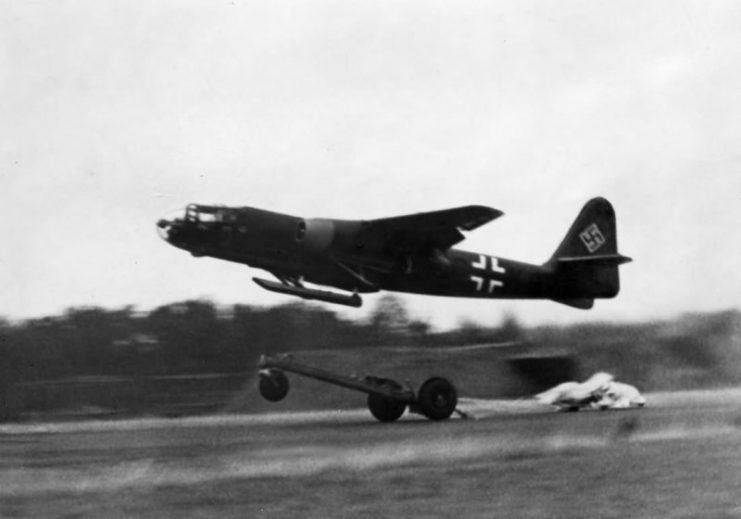
The Ar 234 was not a very large aircraft. With a wingspan of 47 feet and a height of 14 feet, the plane was to be crewed by just one pilot who had a crystal clear view in all directions through the Plexiglas.
The first five prototypes of the Ar 234, ranging from the V1 to the V5, were all powered by the Jumo 004 engines.
But as more prototypes continued to roll out, the manufacturers of the Ar 234 began adopting four BMW 003 jet engines in place of the two Jumo 004 engines. This was seen in the Ar 234 V6 and V8, with the Ar 234 V7 being powered by a Jumo 004.
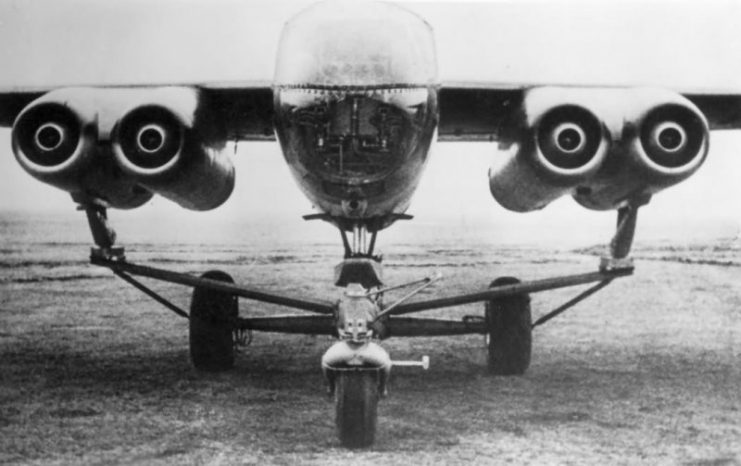
On August 2, 1944, Luftwaffe airman Erich Sommer made history with the Ar 234 V7 prototype, as it became the first jet-powered aircraft ever to fly a reconnaissance mission.
The Ar 234 generally had a high-mounted unswept wing and a slim fuselage cross-section which precluded the fitting of a typical undercarriage.
Estimated to weigh about 8 tons, the aircraft was not fitted with conventional retractable landing gear. This decision was made by Arado in a bid to maximize the aircraft’s internal fuel and reduce its weight.
As an alternative to the retractable landing gear, the Ar 234 was made to take off from an ejectable three-wheeled trolley. For landing, there was a retractable landing skid on each nacelle of the aircraft, and a third one on the center of the fuselage.
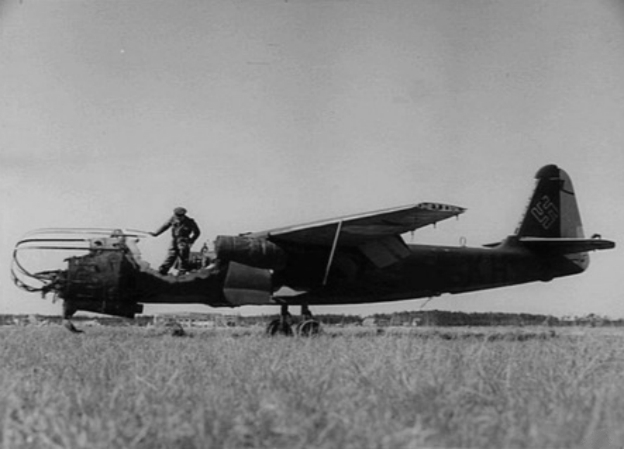
Flying and landing the aircraft turned out to be an unpleasant experience for the pilots. Each time the aircraft was to take off, it needed to be lifted onto a trolley; upon landing, the pilots were barely able to control the aircraft as it made its landing run down the runway.
According to Eric Sommer, landing the skid-equipped prototypes on wet-turf airstrips was like “landing on soap,” owing to the landing skid system’s complete lack of braking capability.
The bomber version of the Ar 234, known as the Ar 234B, incorporated a broader fuselage which allowed the use of typical landing gear.
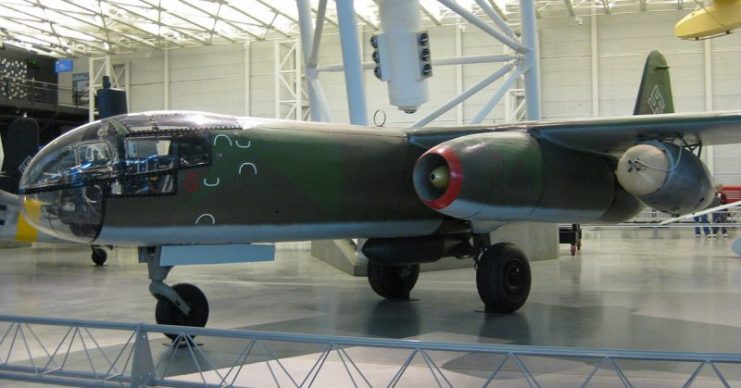
The Ar 234B, being a bomber version, was heavier and slower than the recon versions. It weighed 21,720 pounds and carried its bombs on external racks because of the limited space within the aircraft.
The B model also had a 20 mm MG 151 cannon as an extra measure of defense.
In its years of service, the Ar 234 played the role of both a reconnaissance aircraft and a bomber. Its speed was something to marvel at. It could easily reach a top speed of 461 miles per hour, making it almost impossible to intercept.
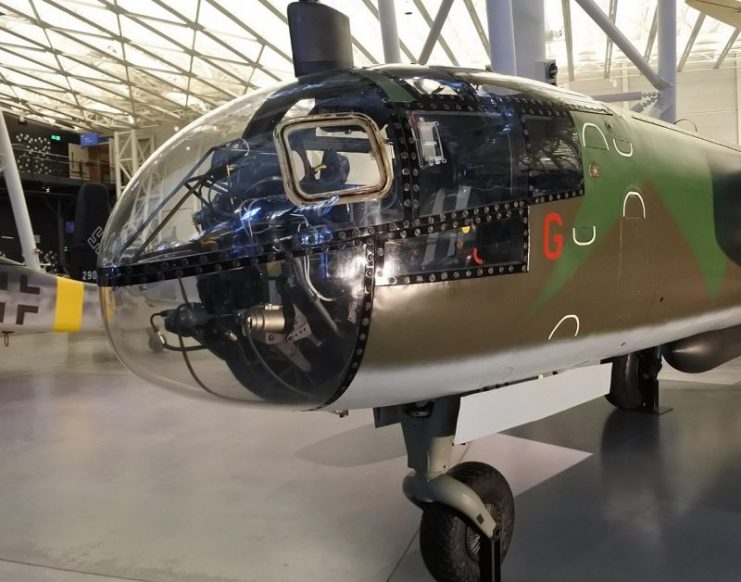
The first recon mission occurred on August 2, 1944. The aircraft shot through the skies that overlooked the Normandy beachheads at 460 miles per hour. The aircraft returned to base unscathed, bringing home pictures of the area which it had captured using two Rb 50/30 cameras.
The bomber versions were equally impressive. They were said by their pilots to be quite fast and aerobatic.
The most notable use of the bomber version came during the Battle of Remagen. The Allies had captured the critical Ludendorff Bridge at Remagen, and the Luftwaffe sought to destroy it by sending Ar 234Bs on bombing missions over the bridge.
The bridge suffered continuous bombardment from Ar 234Bs carrying 2,200 lb bombs, from the 7th of March 1945 until the 17th when the bridge finally collapsed.
Read another story from us: 10 Luftwaffe Aircraft Certainly Gave the Allies Cause for Concern
From 1943 to the end of the war, only 214 aircraft were built, including the prototypes and all variants of the aircraft. Today, only one Ar 234 aircraft still exists.
The last surviving aircraft, an Ar 234B-2 Bomber, is on display at the Udvar-Hazy Center of the Smithsonian National Air and Space Museum, at Washington Dulles International Airport.
